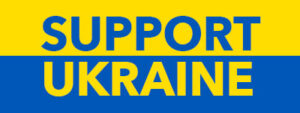
-An interview with Pawlina
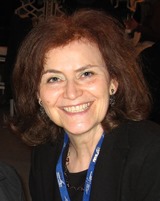
Regular listeners to Nash Holos will be familiar with the name Ukrainian Jewish Encounter. This Toronto-based privately organized multinational initiative sponsors the long running series on the show, Ukrainian Jewish Heritage. This series of vignettes, cultural capsules and interviews has opened a window on this hitherto little known aspect of the Ukrainian experience.
Alti Rodal is Co-Director of the Ukrainian Jewish Encounter Initiative. She is a historian, writer, former professor of Jewish history, and official and advisor to the Government of Canada. She was educated at McGill, Oxford, and Hebrew Universities in history and literature. Her research and writing has focused on aspects of identity, Jewish history and culture, and inter-communal relations.
Alti has been instrumental in a project which began as an exhibition entitled A Journey Through the Ukrainian-Jewish Encounter: From Antiquity to 1914. It premiered in Toronto in 2015 and also travelled to Winnipeg, Edmonton and Montreal. In a recent skype interview, Alti updated us on this project and other exciting initiatives.
In Part 1 of our interview, we discussed a soon-to-be-published illustrated catalog of the 2015 exhibit and plans for an expanded exhibit in 2020 at the Royal Ontario Museum.
In Part 2 Alti shares information about new collaborative projects promoting the introduction of content on Ukrainian Jewish history and heritage to museums in Ukraine.
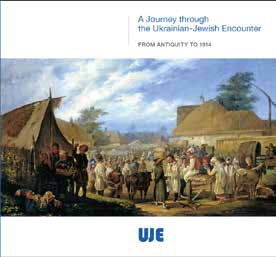
Pawlina: Alti, we had a great discussion earlier about the travelling exhibit in Canada. You’re moving it to Ukraine and this is part of the “Museums in Ukraine:” project. So can you enlighten us about that?
Alti: Yes, well it’s in a stage of formation; we don’t have a concept fully developed yet. But the fact that there are other organizations that are doing related activities has come to our attention. We’re a very small organization and the fact that we can build and work with other organizations is part of our own mandate. We don’t want to duplicate what other organizations do and therefore try to stay abreast of what else is happening, and who else is doing things that would advance our goals and missions.
We found a number of such organizations and have approached them. They are very interested in working with us to promote the introduction of content on Ukrainian Jewish history and heritage to Ukrainian museums in Ukraine.
I can speak about some of these organizations that have already agreed to work with us. In some cases it’s not organizations but individuals who have done very interesting work and are now in a state where they would like to transition out of further involvement in the work they’ve done… but don’t want to lose the momentum that they’ve built and approached Ukrainian Jewish Encounter to see if there is interest in taking their achievements and moving them forward further.
One such case is a child of survivors who lives in Denver, Colorado. His father survived as a partisan in Volyn during the war and comes from a town called Manevychi. After his father passed away he travelled with his son to visit this town, the ancestral home of the family. He wanted to find out something about the Jews that had lived there before the war. So they went to the museum and befriended the museum director who said that there wasn’t much that he had on the Jewish community, which was in fact the bulk, the majority of the population of the town before the war. But he would welcome content, whether photographs or stories, that he would be happy to include these in his museum.
So the fellow from Denver, whose name is Joel, thought of what he could bring. He’s not a historian, but he’s got the talents and imaging … he’s putting together posters of interest, and working with photographs. So he found the memorial book for the town, which was written in Israel in Hebrew in the 1960s, which had photographs in it. He took out a number of these photographs, improved them digitally, and produced some posters.
To make the story short, he improved them again in the course of the next few years. The museum director decided to submit this little exhibit on Manevychi and a few other towns in Volyn to the Festival of Ukrainian Museums, which takes places once every three years and brings together some 300 museum directors from all over Ukraine. He submitted it as an entry for a prize. To everyone’s great surprise it won first prize! And thereby he attracted attention from many museum directors, who approached him to do the same for their town. And this ties in with something that you had said…that there is an interest, even a hunger, for restoring the memory of Jewish communities, where they had once been a significant part of the population and now there are no Jews left in these towns.
So the result was that Joel, who works full time and invested his own money in producing this exhibit that won the prize, felt somewhat overwhelmed. He was in no position to start doing this for all the towns that had expressed interest. So through several channels he was led to the Ukrainian Jewish Encounter. He called me, and told me all about his project. As I learnt more and more about it, I saw a real potential there for doing something important in Ukraine. And this is how it evolved into not just exhibits but also educational and commemorative dimensions.
That’s once source. Another source was the Protecting Memory Project, which started in 2010. The American Jewish Committee had received funds from Germany, from the Claims Conference, to do something in the realm of commemoration. They embarked on a pilot project to build protective spaces and monuments at several mass grave sites. They chose five places and worked on this for five years. Then in 2015 they invited individuals from around the world to join them in participating in the commemorations at these locations. That was one of the people I invited and was very impressed by the reception that these three buses that were on the tour … how they were received in each of the five places. And the commemoration ceremonies that took place there.
In almost every case the ceremonies were organized by local teachers and their students. It involved the cooperation of the mayor, and the religious leaders, and of course the parents of the students. So we had large gatherings at each of these commemorations and very moving. I was so impressed that the local people were so committed to participate in these dedications. In once instance, we were delayed for almost three hours and we nonetheless went to the village where we were expected. When we arrived it looked to me like the whole village was out there waiting for us for three hours! Small children, families at around suppertime; they should have gone home. But they were there waiting for us. This is a good sign to me of the interest in acknowledging the strong ties that Jews and Ukrainians had had in these places in the pre-war years, and remembering what had happened to them.
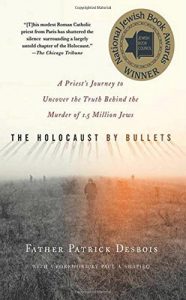
Pawlina: This project of the mass graves… it was in the news back in 2010 or 2011. It was Father [Patrick] Desbois, correct?
Alti: Yes. He was involved in the Protecting Memory Project. In fact the first location is one that he writes about in his book The Holocaust By Bullets, and he was present with his people at that commemoration. Indeed, yes. Now the fact is that there are not one, or ten, or 100 such sites in Ukraine, but up to 2000.
Pawlina: Two thousand mass graves!
Alti: That’s the higher number; 1000 is the lower number. Organizations have their ways of assessing the numbers. The Yad Vashem counts several mass grave sites that are in one general location as one, and that’s how you get 1000. And those who count each one reach the 2000 number. It would be a massive, massive project to try to commemorate all these places with the proper monuments. But the idea that one might advance such commemoration at 100 over the course of a three-year period, though ambitious, it’s doable. It could start what we hope would be a grassroots movement to do this in other places by the local people.
Pawlina: And you’ve seen some of that already. You were telling me about one site that was marked just with an old truck or something.
Alti: Yes, this is actually the site of my own family’s mass grave site. I have three grandparents in a mass grave site in the Chernivtsi area. I’ve written several articles about this.
The story is that I was born in Chernivtsi after the war, and went back in 2001. Through a series of coincidences and unexpected coming together of incidents, I ended up in front of the mass grave in this village near Chernivtsi.
It was in the valley that there was a bit of a wreckage of a truck that was put in the middle of this valley to mark it as a site that must not be cultivated. All around this little valley are cultivated sunflower fields, which were very dramatic that summer when I saw them. And then there’s this spot that the local people know well, and do not cultivate. So the memory is there.
I ended up coming back to the village at least six times that summer while I was living in Chernivtsi. I interviewed elderly people, all of whom gave very moving testimonies of what they remembered as children or teenagers. Some of them were in their late teens and had good memories of events. I have all this on video, actually, and shared it with Fr. Desbois’ documentation centre. I have also used it in write-ups and my articles. The villagers, the elderly villagers, had very emotional reactions telling the stories to me, and receiving me as a long-lost daughter of the village.
Pawlina: Alti, I can’t imagine what you must have experienced encountering that site. Thank you so much for sharing the story. A lot of people don’t like to share; they just want to forget and move on with life. That’s sometimes … you can bury things but they tend to come back, don’t they?
Alti: Yes and they are coming back now, with the younger generation of scholars to begin with. They are finding these stories in the archives, in oral histories, in all kinds of records…whether German records or Soviet records. If you don’t trust one source of the records, you have to look at the different sources and cross-reference them and the truth comes out.
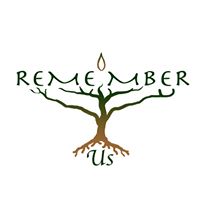
Pawlina: Yes. It always does. So you’ve mentioned a couple of aspects of this Museums in Ukraine project. You’ve also mentioned that you are working with other organizations. One of them that we featured … Peter Bejger had done a feature on the Remember Us organization. They were involved with planting trees to commemorate the Holocaust.
Alti: Very recently I was introduced to Julia Korsunsky (at Remember Us) and I found that the approach they’ve adopted is one which is highly educational and grassroots. And they were doing this on a shoestring budget and reaching out especially to young people; high school kids who’ve become the local docents for the wider community at exhibits, modest exhibits, about the history of the Jews in their location… their town or their village. And they also bring people to visit the local mass grave sites.
One of the results of this is that in those locations the mass grave sites are respected. There’s a monument there, or there’s a fence around the area, and people know what that site is about. In contrast with other locations…there are even places where the local mass grave site is a garbage dump. I suspect the local people are just not aware of what that site is all about, and if they knew about it they couldn’t leave it in the state that it’s in.
When spring comes, there are others in Ukraine who are going to be looking into these mass grave sites which have garbage dumps. 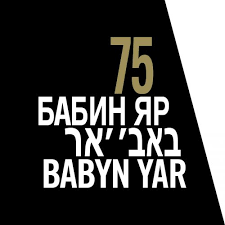 We know about them because there was a young German photographer who in 2011 went around photographing these sites of atrocities and found these dumps which were exhibited at a conference in Kyiv last October, a conference on Babyn Yar. He wanted to show that there are other smaller sites, much smaller sites than Babyn Yar that should also not be forgotten and neglected. So out of this, hopefully there will be a correction of this lack of respect for human life.
We know about them because there was a young German photographer who in 2011 went around photographing these sites of atrocities and found these dumps which were exhibited at a conference in Kyiv last October, a conference on Babyn Yar. He wanted to show that there are other smaller sites, much smaller sites than Babyn Yar that should also not be forgotten and neglected. So out of this, hopefully there will be a correction of this lack of respect for human life.
Pawlina: Yes. Lots of work ahead.
Alti: Yes, there’s a great deal to do, and Ukrainian Jewish Encounter is a small organization hoping to inspire that needed actions be taken which would help in the healing of the rift that, after WWII especially, needs to be healed.
Pawlina: Yes, and you’re doing great work at Ukrainian Jewish Encounter, to do that. So Alti, if someone listening now is inspired to learn more, and perhaps even lend a helping hand to one or more of these projects, what you recommend they do?
Alti: For a start, they should check out our website, ukrainianjewishcounter.org, and learn more about the organization. It includes contact information, and our contact person is very reliable to pass on the information to those in the organization who are most suited to respond. So that’s the way to do it. Ukrainian Jewish Encounter … one word … dot org.
Pawlina: Simple! Yes, and fair warning to anyone who hasn’t been to that site yet, there’s a lot of information there. So plan to spend a lot of time, and it will be worth every single second. Thank you so much Alti, for sharing your thoughts, your stories … your personal stories … as well as letting us know about the wonderful work that is going on at Ukrainian Jewish Encounter. And thank you again on behalf of myself and our listeners for sponsoring Ukrainian Jewish Heritage. It has been an eye-opener and it’s wonderful to be able to do this series.
Alti: Thanks very much for having the interest, and for including this interview in your series.
Pawlina: My pleasure, and I look forward to speaking to you again in the future.
Part 1 of this interview can be found here.
Ukrainian Jewish Heritage is brought to you by The Ukrainian Jewish Encounter based in Toronto, Ontario. To find out more visit their website (here) and follow them on Facebook and Twitter.

Suggested Further Reading:
These books include The Holocaust by Bullets by Fr. Patrick Desbois, cited in the above interview with Alti Rodal, as well as a follow-up to it. Also, a recent book on Babyn Yar, a well-known mass grave in Kyiv. The book was written as part of the commemoration ceremonies held last year 75 years after the atrocity. As well, another book by Fr. Desbois that describes history repeating itself in today’s world, drawing chilling parallels between the Nazis of WWII and ISIS.
Look for these books in your public library, or purchase on Amazon. If you are interested in purchasing one or any of these books, please consider doing so by going to Amazon through these links. There is no extra cost to you at all, and it will give Nash Holos a (very) small commission. It is a totally cost-free way of supporting Nash Holos. Свій до свого! Дякую!
Tune in to the Vancouver edition of Nash Holos Saturdays at 6pm PST on CHMB Vancouver AM1320 or streaming online. As well, the Nanaimo edition airs on Wednesdays from 11am-1pm on air at 101.7FM or online at CHLY Radio Malaspina. As well the International edition airs in over 20 countries on AM, FM, shortwave and satellite radio via PCJ Radio International. (To get the podcast links, click on the Listen tab in the menu bar.) In between broadcasts, please follow @NashHolos on Twitter and Like the Nash Holos Facebook page. I love to hear from you so please me send your suggestions, dedications and requests here. Your comments are always welcome!

